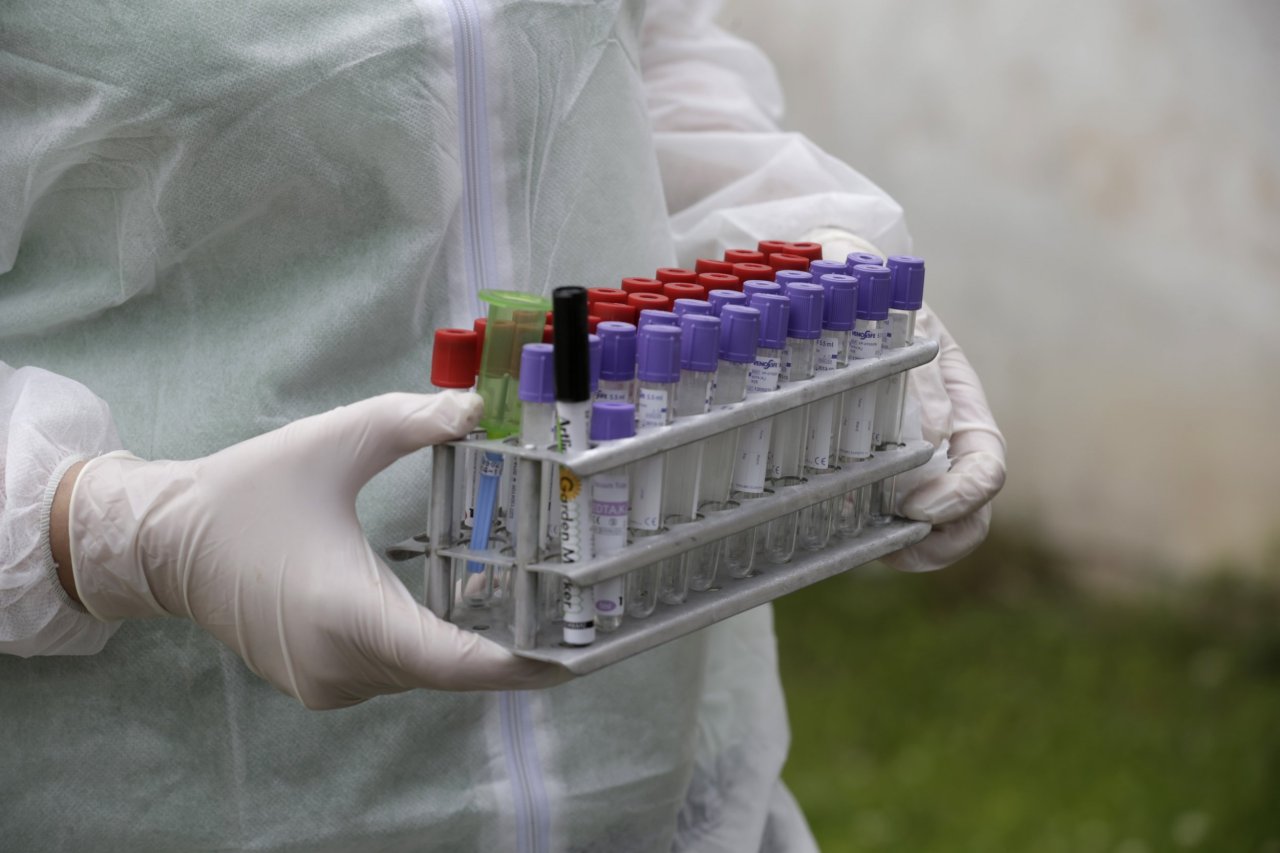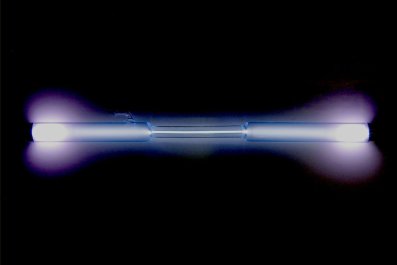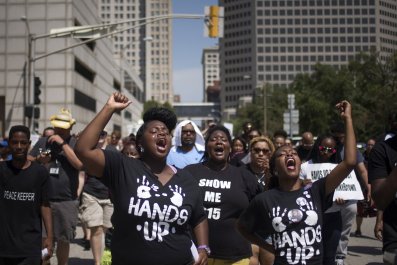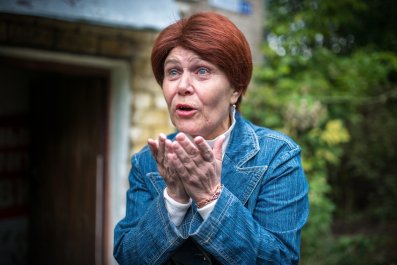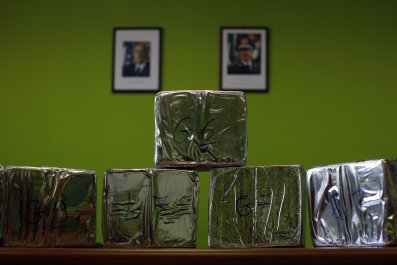The ancient quest for an elixir of life has been disappointing, if not disastrous. Once upon a time, alchemists devised formulas based on the likes of mercury and arsenic and it's thought that various Chinese emperors were poisoned in their bids for immortality. Now there's growing evidence for a form of rejuvenation that sounds like something out of the legend of the vampire. It seems the reason we are stronger and mentally more agile when young rests in part on having young blood: not supping it but having it course through our veins. Researchers in countries from the United States to Israel are now racing to understand and exploit this new way to restore an old body.
Later this year an experiment will open another chapter in this work. The human trial, due for October, will focus on arresting the cognitive decline of Alzheimer's disease. However, evidence to date has shown young blood can rejuvenate more than brain – muscles, cartilage, pancreatic cells and more besides.
The feat dates back to a ghoulish experiment with a long and distinguished history stretching over more than a century. Parabiosis, when scientists connect the circulatory systems of two animals, was first documented on albino rats in a monograph by the French physiologist Paul Bert in 1864. Such experiments began to yield clues that young blood could restore the old in the late 1950s and 60s, notably in work by Clive McCay of Cornell University in Ithaca, New York, best known for his studies linking low calorie diets to life extension. This research, while anecdotal, provided evidence of benefits to the older animal in terms of both longevity and tissue function.
More recently, scientists have started to shed light on the mechanisms of bloody rejuvenation. In 2005, Thomas Rando at Stanford University in California and his team reported how they induced muscle and liver damage in the older mice and found that, after plumbing them into the blood supply of young peers, the old tissues healed normally. Yet when old mice were connected to fellow old mice, they healed slowly.
So was born the idea that old blood somehow prevents repair in old age and that mysterious factors that are abundant in young blood could reactivate parent cells – stem cells – for the treatment of degenerative diseases such as Alzheimer's or muscular dystrophy.
One of the postdoctoral researchers who contributed to Rando's study was Amy Wagers. After moving to Harvard University in 2004, she collaborated with Robin Franklin at the University of Cambridge to show that the blood of young animals seemed to rejuvenate ageing cells in the spinal cord to help them recover more effectively after injury. Wagers and Franklin found that a class of blood cells called macrophages is more active in younger animals, helping to stimulate the remyelination of the spinal cord attacked by the disease multiple sclerosis, when the body's immune system turns on the myelin sheaths that protect nerve cells. A further study, with Charles ffrench-Constant of Edinburgh University, found that only a subset of M2 macrophages work, not just by helping to mop up damage, which inhibits repair, but also exuding factors that encourage restoration, notably the protein Activin A.
Later, in a study published in 2013, Wagers connected healthy young mice with old mice, and examined the effects on cardiac hypertrophy, which swells the size of the heart. Together with Richard Lee of Brigham and Women's Hospital, she observed that after a month the old mouse's heart shrank to a more youthful size. "We compared young and old animals and identified a substance in the blood – a protein called GDF11 – that is present at high levels when young, and lower levels when old," she says.
Next, Wagers and Lee boosted the low levels of this substance in old animals to those seen in youth and observed the heart was rejuvenated, with a similarly dramatic effect to that of parabiosis. Her team followed up by showing GDF 11 similarly improves skeletal muscle function and increases the exercise capability of mice equivalent in age to a 70-year-old human. Not only did they see a restoration of muscle stem cell function, they saw the repair of DNA damage too.
Working with Lee Rubin, who is developing treatments for neurodegenerative diseases, the team also reported that injections of GDF11 improved the function of the olfactory region of their brains so that they could detect smell as younger mice do. They measured an increase in neural stem cells, and saw increased development of blood vessels in the brain. "We do think that, at least in principle, there will be a way to reverse some of the cognitive decline that takes place during ageing," says Rubin.
Within three years, Wagers hopes to conduct human trials in which her team monitors levels of the protein in the elderly to see if they correlate with diseases of old age. Within five years, she hopes to study if she can help reverse the damage of ageing with GDF 11, a molecule like GDF 11, or one that persuades the body to make more of this factor.
Another Stanford team, led by Tony Wyss-Coray, reported with Saul Villeda and Thomas Rando in 2011 that more new nerve cells were made in key regions in the brains of old mice exposed to blood from young mice, while introducing young mice to blood from old mice had the reverse effect. In follow up work, they used sophisticated techniques to pin down changes in the brains of old mice bathed in young blood, notably to a key structure linked with memory, called the hippocampus. These changes were seen to convert into changes in ability: they trained mice to locate a submerged platform in a water-filled container by remembering cues provided by their surroundings. Typically, untreated older mice did poorly compared to young mice. But if they were infused with young mice's plasma they did much better, "as if these old brains were recharged," Wyss-Coray says.
He has co-founded a biotechnology company, Alkahest, to explore treatments. Next month, his team at Stanford will give a transfusion of blood plasma donated by people under 30 to older volunteers with moderate to mild Alzheimer's. Transfusions of old blood have been performed countless times before but this time they will, with Rando acting as advisor, compare cognitive function before and after the transfusion of blood from a donor of known age.
As the long history of the elixir quest illustrates, it is best to be cautious. There are vast numbers of ingredients in blood so it seems doubtful that GDF11, Actin A and macrophages alone hold the secret of youth.
There are also theoretical risks to explore, for example concerns that these factors could make it easier for cancers to become established. Still, many are sanguine that we may be approaching a future where a cocktail inspired by young blood could at least improve the quality of life of the elderly, even if it does not deliver the immortal promise of that long-sought elixir.



